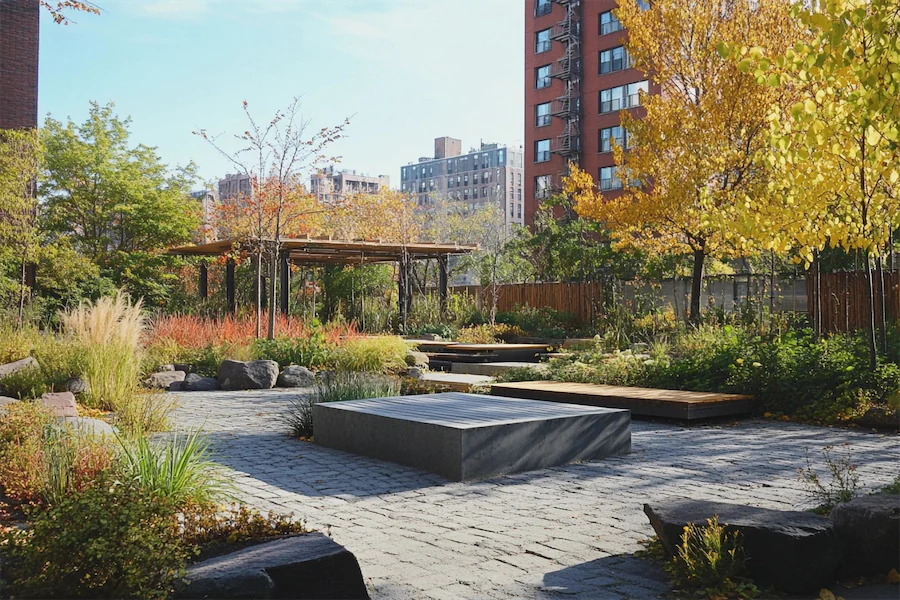An urban garden is a cultivated space within a city environment, designed to grow plants, vegetables, or flowers, thereby enhancing urban aesthetics, promoting sustainability, and improving residents’ quality of life.
History and Origins of Urban Gardens
Urban gardening dates back to ancient civilizations, where city dwellers cultivated plants for food and medicinal purposes. In modern times, the practice gained momentum during periods of economic hardship and war, notably with the “Victory Gardens” of World War II, which encouraged citizens to grow their own produce. Today, urban gardening addresses contemporary challenges such as food security, environmental sustainability, and community cohesion.
Key Features of Urban Gardens
Urban gardens vary widely but often include:
- Container Gardening: Utilizing pots, buckets, and other containers to grow plants in limited spaces like balconies, patios, or windowsills.
- Vertical Gardening: Maximizing space by growing plants upward using trellises, wall-mounted planters, or hanging baskets.
- Community Gardens: Shared plots where individuals or groups collaboratively cultivate plants, fostering social interaction and shared responsibility.
- Rooftop Gardens: Transforming flat rooftops into green spaces for growing plants, which also helps in insulating buildings and managing rainwater.
- Hydroponics and Aquaponics: Soilless cultivation methods that use nutrient-rich water solutions, suitable for urban areas with limited soil access.
Applications of Urban Gardens
Urban gardens serve multiple purposes:
- Food Production: Providing fresh, locally grown produce, reducing reliance on imported foods, and enhancing food security.
- Environmental Benefits: Improving air quality, reducing urban heat islands, and supporting biodiversity by creating habitats for pollinators and other wildlife.
- Community Engagement: Offering spaces for social interaction, education, and collaboration among urban residents, strengthening community bonds.
- Mental and Physical Health: Encouraging physical activity and providing therapeutic benefits, contributing to overall well-being.
Considerations When Creating an Urban Garden
When planning an urban garden, consider the following:
- Space Optimization: Assess available space and choose appropriate gardening methods, such as vertical or container gardening, to maximize the area.
- Soil Quality: Test for contaminants, especially in reclaimed urban spaces, and use raised beds or imported soil if necessary to ensure plant health.
- Water Management: Implement efficient irrigation systems and consider rainwater harvesting to conserve water resources.
- Plant Selection: Choose plants suited to the local climate and urban conditions, prioritizing native species to support local ecosystems.
- Regulatory Compliance: Be aware of local regulations or permits required for urban gardening projects, particularly for community or rooftop gardens.
Conclusion
Urban gardens are vital components of sustainable city living, offering environmental, social, and health benefits. By thoughtfully integrating green spaces into urban areas, residents can contribute to a more resilient and vibrant community, fostering connections with nature and each other.
